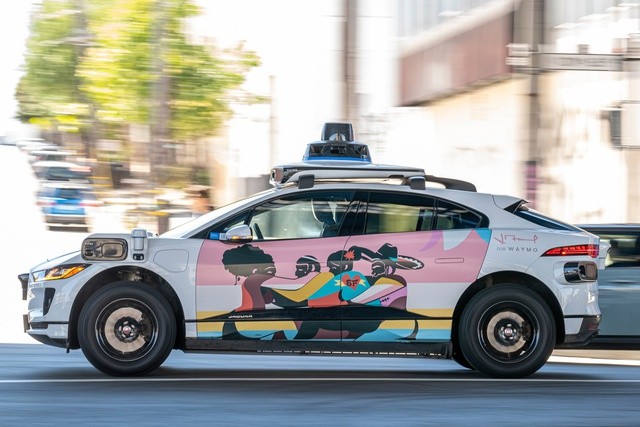Once known as the epicenter of the Covid-19 pandemic, Wuhan is now recognized worldwide for having the largest fleet of autonomous vehicles. It is an important testing center for this emerging technology, as China continues to invest in the infrastructure needed for self-driving cars.
According to analysts, the progress made by Chinese companies and government agencies in Beijing poses a new challenge for the West. Raymond Tsang, a automotive technology expert at Bain, says: “It is difficult to measure, but if you look at the level of deployment readiness and technology readiness, China is probably less than two years behind. The momentum to bridge the gap is very strong.”
China started developing autonomous vehicles for commercial use in 2013, about five years after the United States. However, as of September last year, self-driving cars in China had traveled a total of 70 million kilometers, on par with the US, according to data from Bain.
In Wuhan, 500 robotaxis, mostly operated by Baidu – the Google of China – made more than 730,000 trips last year. Waymo told the Financial Times that they have “several hundred cars” in each area.
With its technological advantage and existing platform, Baidu expects its new move to contribute more to the development of smart transportation and autonomous vehicles in Beijing, while supporting the city in becoming a leading global AI innovation center. Users only need to access the Baidu Maps mobile app or Apollo website, book a driverless taxi, and within minutes, the smart car will appear.
The safety of self-driving vehicles has gained media attention since early October, when Cruise, the autonomous vehicle division of General Motors, collided with a pedestrian and dragged the victim on the streets of San Francisco. Commenting on the incident, a Cruise representative said the vehicle was just trying to hug the curb – a pre-programmed action in the event of a collision.
About three weeks later, the California regulatory agency revoked Cruise’s operating permit. The fleet of 400 cars in and around San Francisco had to be suspended. Meanwhile, in China, Baidu was celebrating its driverless cars, claiming that no major accidents occurred during the testing phase. Each robotaxi is remotely monitored and ready to intervene if there are any issues on the road.

Waymo
Waymo refuses to provide the number of remote operators per vehicle. The US company emphasizes that its product will make all decisions on the road, without reliance on a driver, whether inside or outside the vehicle.
“If a Waymo vehicle detects that the road ahead is under construction, it will hug the curb and request confirmation from the team’s experts before taking an alternative route,” a Waymo representative said.
Even so, Ya-Qin Zhang, Chairman of the AI Research Institute at Tsinghua University in Beijing, said the Chinese government will still be “very, very cautious” until they are assured that autonomous vehicles are safe.
“Safety needs to be ten times higher than that of human-driven vehicles to be deployed on a large scale,” said Ya-Qin Zhang.
In addition to Wuhan, Baidu and a series of domestic rivals, including Pony.ai and AutoX, have established many testing areas across China. Several electric car developers, including BYD, also have internal teams developing advanced driver assistance systems.
According to Bain, the current scale indicates that China may be aiming for an “inflection point” around 2027 in terms of commercially viable key technologies. Bain also expects authorities to soon fine-tune legal frameworks, insurance, and improve accompanying road infrastructure and telecommunications.
In 2021, a McKinsey survey showed that nearly 60% of leaders in the industry expect North America to surpass China in the development of autonomous vehicle technology. Currently, the ratio is almost equal.
“This is evidence of China’s progress, driven by the government’s investment in research and the availability of data. Consumers also have easy access to new technologies,” McKinsey analysts said.
“I have been driving for quite a long time. Honestly, long-distance driving makes me very sleepy or tired, so I am quite looking forward to driverless taxi services,” shared Zhao, a Beijing resident.
Ya-Qin Zhang is currently calling on the government and industry to expand the Wuhan project to the entire city. This expansion would allow vehicles to learn how to operate and handle urban driving challenges.
“If a car can drive in Wuhan, I’m pretty sure it can drive in any other city,” Ya-Qin Zhang said.
It is known that Beijing is building nationwide regulations to clarify which company will be responsible in the event of an accident. Autonomous patrol cars are also being tested on the roads.
Tom Nunlist, a China tech expert at consulting firm Trivium, said the increased surveillance from Beijing reflects efforts to “balance” safety concerns with unnecessary acceleration of technology development.
“China wants to win this race. They want to lead in technology,” Tom Nunlist said.
Source: FT, The New York Times












